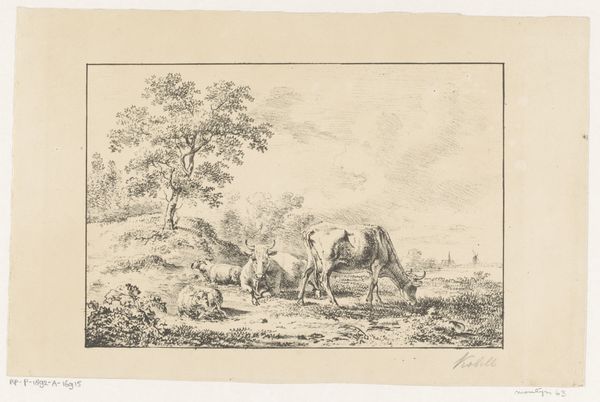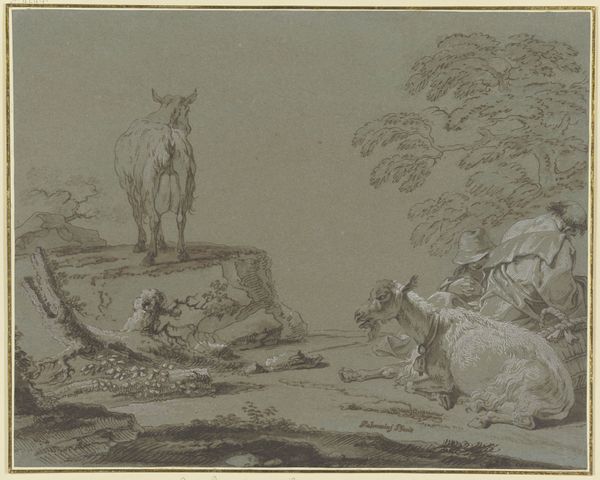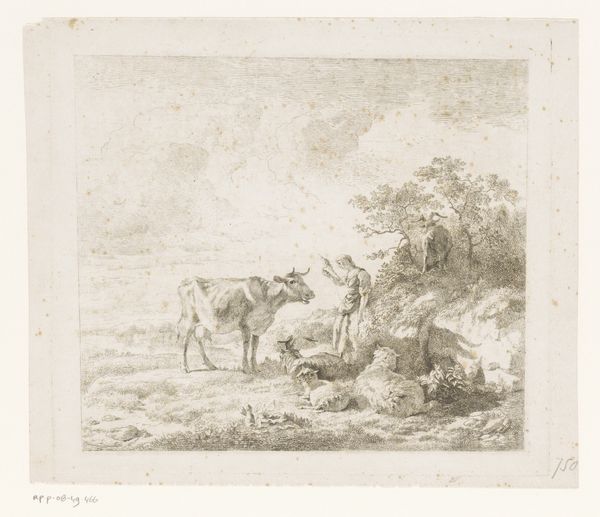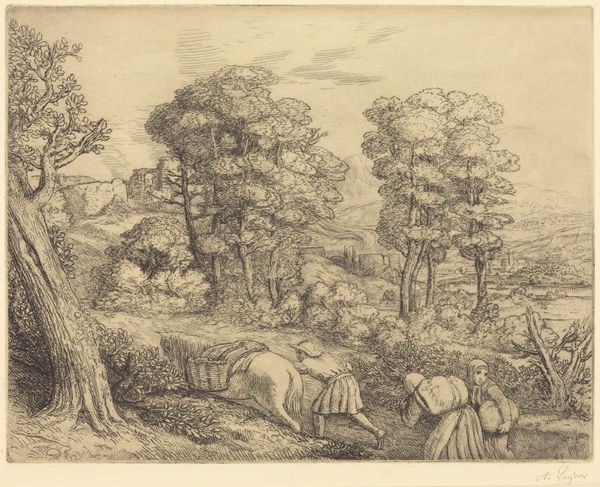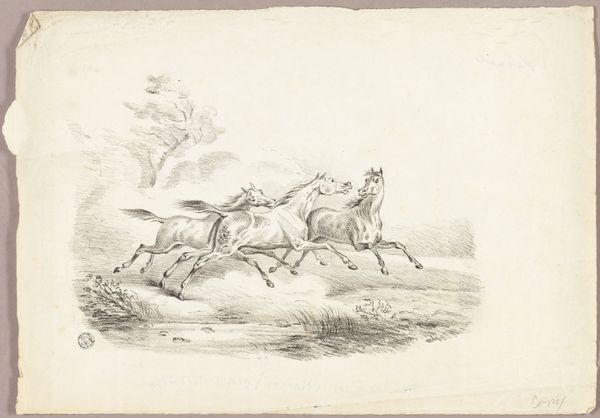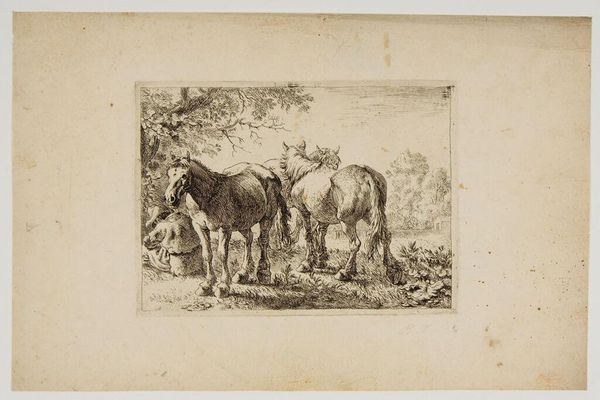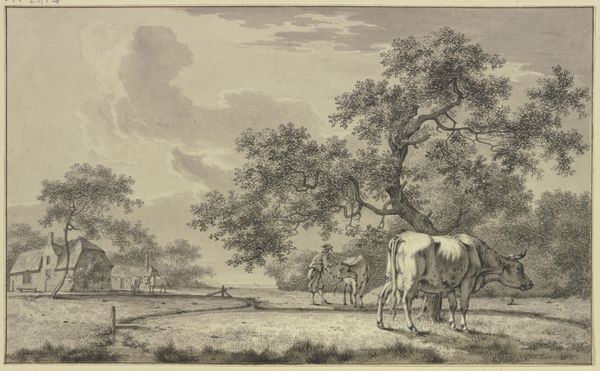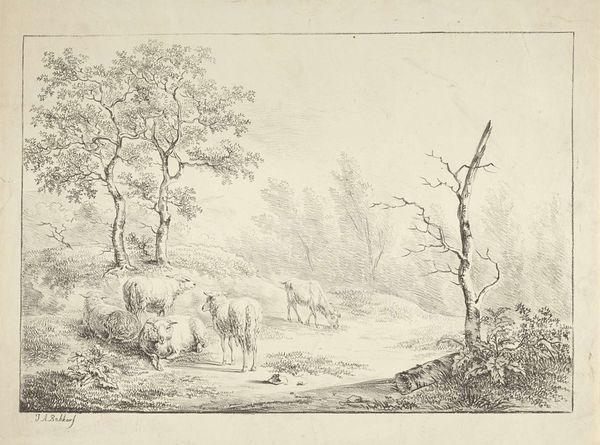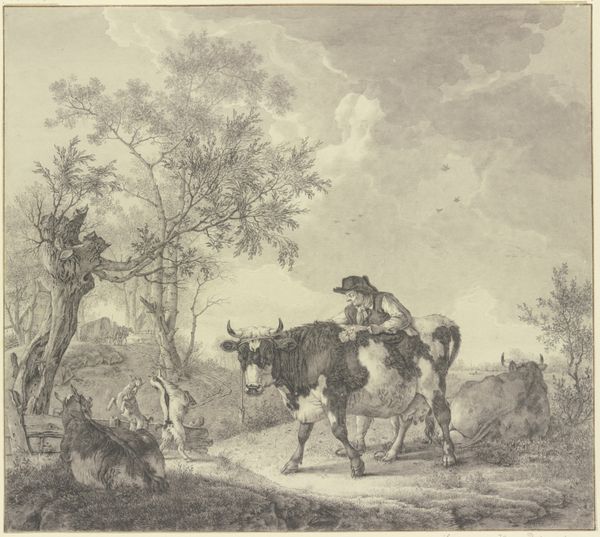
drawing, pencil
#
pencil drawn
#
drawing
#
pencil sketch
#
landscape
#
charcoal drawing
#
figuration
#
pencil drawing
#
pencil
#
line
#
realism
Dimensions: 315 mm (height) x 199 mm (width) (bladmaal)
Editor: Here we have "A Horse and Three Cows" by Christian David Gebauer, created sometime between 1777 and 1831. It’s a pencil drawing, and it has a really serene, almost nostalgic feel to it, don’t you think? The horse, especially, has this noble presence. What strikes you most about this piece? Curator: Well, seeing this, I immediately consider the rising interest in rural life during that period. The image presents a sort of idyllic, simplified version of farm life. Gebauer isn't just depicting animals, but tapping into a broader cultural desire for simpler times, an imagined escape from increasing industrialization. The presence of the horse too isn't incidental; what did the horse symbolize in the context of early 19th-century Denmark? Editor: I guess it represents freedom, or maybe status? Land ownership? Curator: Exactly. Consider how the rising middle class was consuming and interpreting images of rural life. Were these artworks tools for solidifying class identity and values, or were they more democratically accessible images? Also, who commissioned works like these, and how were they displayed? What purpose did they serve beyond simple aesthetic enjoyment? Editor: That’s interesting – I hadn’t thought about the intended audience. I was just admiring the composition and the artist's skill with pencil. So you’re suggesting that appreciating art requires a critical look at society at the time? Curator: Precisely. Art never exists in a vacuum. Examining art like Gebauer’s provides a fascinating lens through which to view social, economic and political changes. Editor: That gives me a completely different way of looking at seemingly simple landscapes. Thanks for pointing out all those different layers to consider.
Comments
No comments
Be the first to comment and join the conversation on the ultimate creative platform.
